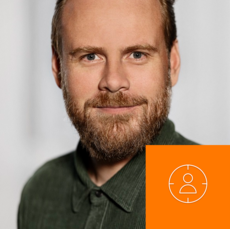Inspiration for Recruitment
Here you find inspiration for addressing gender equality, diversity and inclusion in relation to recruitment
Systematic use of search committees in the faculties
The systematic use of search committees can be of great significance if one wishes to ensure a pool of applicants with diversity and high quality for permanent scientific positions. As part of the Action Plan for Equality, Diversity, and Inclusion 2023-2025, all faculties at Aarhus University have formulated guidelines or similar for the use of search committees at the faculty.
Faculty guidelines in PDF format:

Case: Transparency in recruitment
School of Culture and Society supports that all employees experience transparency as to how the department's recruitment processes are structured, who makes decisions, and when and how employees are involved. The objective is that all employees are given a solid basis for planning their further career paths.
In the video, Deputy Head of School Marie Vejrup Nielsen, explains.
Selected points from the case
- Challenge: Employees – especially younger and/or international employees – indicate that it is at times difficult to understand the recruitment plans and processes of the school, and furthermore how employees are informed and involved.
- Desired outcome: All employees experience transparency with regards to how the recruitment processes of the school are structured, who makes the decisions underway, and how employee are informed and involved.
- The goals are:
- Clear procedures that all employees have knowledge of.
- Improved employee satisfaction.
- All employees develop a good basis for their future carrier path.
- Activity - this is what we have done: The Deputy Head of School gives a presentation on all staff meetings about the recruitment processes related to academic staff, postdoc staff, and other staff positions at the school. The presentations consist of thorough information on the recruitment process, including:
- Preparation and approval of openings.
- Assessment committee and appointment committees: Establishing, tasks, and competences.
- Information on co-operation between academic staff and the administrative support on assessment of positions.
- Response from employees: There has generally been a positive response, which has given rise to constructive dialogue on the practice in different departments.
- Pay attention to...: Pay attention to open positions in specific environments when informing in general, so that focus can be kept on the general.
Case: Increasing the field of applicants
At the Department of Mathematics, the work of search committees has been systematized and expanded. It begins even before a job advertisement is published.
The aim is to increase the proportion of qualified applicants, e.g. female applicants, as there is a lot of competition in the international labor market.
In the video, Head of Department Jakob Schach Møller explains.
Selected points from the case
-
Challenge: To ensure qualified applicants in situations where there is a strong competition for talented researchers in the international labor market. E.g. female talents, and talents within topics such as statistics and computer science.
- Desired outcome: To obtain a sufficient number of qualified applicants, so that after assessment and interview you have at least three times more applicants than you can hire; all of them so good that you would hire them without hesitation. There must be room for some applicants to decline an offer, which they will do in the segments where the recruitment challenge is greatest.
- Activity – this is what we have done: Our approach combines two elements; both start up before a job posting goes out
- Systematic review of department websites from a) all mathematics departments in Denmark, Norway and Sweden and Northern Germany and b) all the best mathematics institutes worldwide, in order to identify potential applicants within the desired segment.
- Systematic use of network to identify possible candidates who do work sit in the above mentioned institutions and thus will not be found through point 1.
Once a list of potential applicants is collected, they should be contacted personally. It is an advantage if this is done by a search committee, as it is preferable that the person who make contact
has the same scientific background as the potential applicant. The job posting goes out when a satisfying number of positive replies from the candidates who have been approached, has been secured. We used the method for the first time in an attempt to attract female applicants for a mathematics position and are now using it again in relation to a position concerning digitalization.
- Response from employees: Positive, as there was a surprise at how many (women) we actually managed to identify. In the beginning, there was some hesitation in having to make contact to a large number of potential applicants who had no prior relationship with AU or with the department's staff.
- Pay attention to...: When identifying potential applicants at the best universities around the world, in a situation where there is strong competition, one must be expect that not many give a positive reply. It is important to be persistent and include more universities in the search than one might have thought necessary. In the layer below the very best universities, one begins to find more realistic applicants. One must also expect that the vast majority of those from the best universities, whom you reach out to, do not answer. These are talents who regularly receive emails with information about upcoming job opportunities.
Case: Active use of tenure-track assistant professorship
Department of Management has for a number of years used tenure track assistant professorships. The aim is to attract and retain more highly qualified international applicants for assistant professorships - in particular women.
The experiences are positive - especially if the use of tenure track is combined with other initiatives.
In the video, Head of Department Jacob Kjær Eskildsen explains.
Selected points from the case
- Challenge: Previously, the department did not receive a lot of relevant applicants for vacant assistant professor positions. In particular, there were few foreign female applicants.
- Desired outcome: To attract and retain more highly qualified international applicants for assistant professorships - in particular women.
- The goal is:
• to raise the quality of the recruited assistant professors
• to strengthen international recruitment
• to attract and retain more highly qualified female applicants for vacant assistant professorships - Activity - this is what we have done: MGMT is one of the main sponsors of the largest international conference within the department's subject areas, and the department is very active in the associated job market. Relevant candidates are invited to Aarhus and will be employed in tenure-track assistant professorships if the match is correct.
- The department has also worked extensively with:
- Research production
- Teaching quality
- Academic citizenship
- Process for tenure review with the participation of international assessors.
- The department has also worked extensively with:
- Response employees: The general feedback from potential candidates is that few would have considered Aarhus if we had not offered tenure-track employment.
- Pay attention to...: It is important to define tenure criteria that are as unambiguous as possible. Otherwise, it creates uncertainty among the recruited employees.
Listen to #DiversityAU podcast featuring Mathias W. Nielsen, Copenhagen University on Gender equality and diversity in recruitment

"Recruitment is a key focus area, when it comes to questions of gender imbalance in science", says associate prof. Mathias Wullum Nielsen. He gives insight and inspiration as to how gender equality and diversity can be a part of recruitment processes.
Keynote with Eva Berneke, CEO of KMD, from the conference on Gender Equality at AU in 2019
Diversity through recruitment
Eva Berneke shares her experiences with recruitment as a tool to work towards a more diverse workplace. However, recruitment alone cannot serve as the sole lever to establish an inclusive workplace. It must be part of a holistic approach to working for gender equality, diversity, and inclusion.